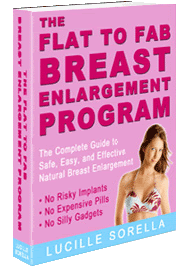"Sometimes my chest gets incredibly itchy, and I have to scratch—even in public."
First, slather your set with body lotion after you shower. This will keep your skin moisturized, which reduces dryness-induced itching. Next, look for moisture-wicking fabric and breathable microfibers, which are less irritating.
Itching plus redness can be a sign of a skin allergy. If you notice this, ease the discomfort with a cortisone cream, and then switch detergent and soap brands to see if that makes a difference. Should you detect a patch of red, scaly skin, you may have a skin yeast infection. Apply an OTC antifungal cream to kill the yeast.
But if a scaly sore appears on your nipple and doesn't heal, visit your MD. It can indicate a very rare form of breast cancer.
- from "Bizarre Boob Behavior," Cosmopolitan Magazine , May 2008
, May 2008
Rash from a Fungal or Yeast Infection
Rash Treatment Options
I've had this happen. It's itchy and red, and normal lotions won't fix it. The problem is that sweat can collect between or underneath the breasts; moisture-rich environments are breeding grounds for fungal and yeast infections. I used an over-the-counter cream, Lotrimin Ultra , to clear mine up.
, to clear mine up.
Whatever treatment you choose, make sure to follow the instructions. It'll tell you to use the cream for a specific number of weeks. Even if your symptoms clear up, continue to use the ointment for the instructed treatment time. If you don't, the rash could come back. Also, make sure to rub the cream over the entire rash and on the surrounding skin. You want to treat the entire general region, not just the itchy red spot.
The ointment should help soothe your skin and make it less itchy; if it irritates your skin, stop treatment immediately and see your doctor. If your rash returns or doesn't clear up after treatment, see your doctor. Take anything you used on the rash with you to show your doctor.
Rash Prevention
To help prevent getting a rash in the first place, keep your skin dry. I sometimes use cornstarch powder. However, don't use powder if you have a rash or are currently treating a rash: it could make it worse.
Reducing the amount of oil on your skin may also help to prevent rashes. Try using a glycolic acid cleanser or lotion to dissolve excessive torso oils.
Learn more about fungal infections of the skin at WebMD
Read about more treatment options for tinea versicolor at DERMAdoctor
, December 2008







